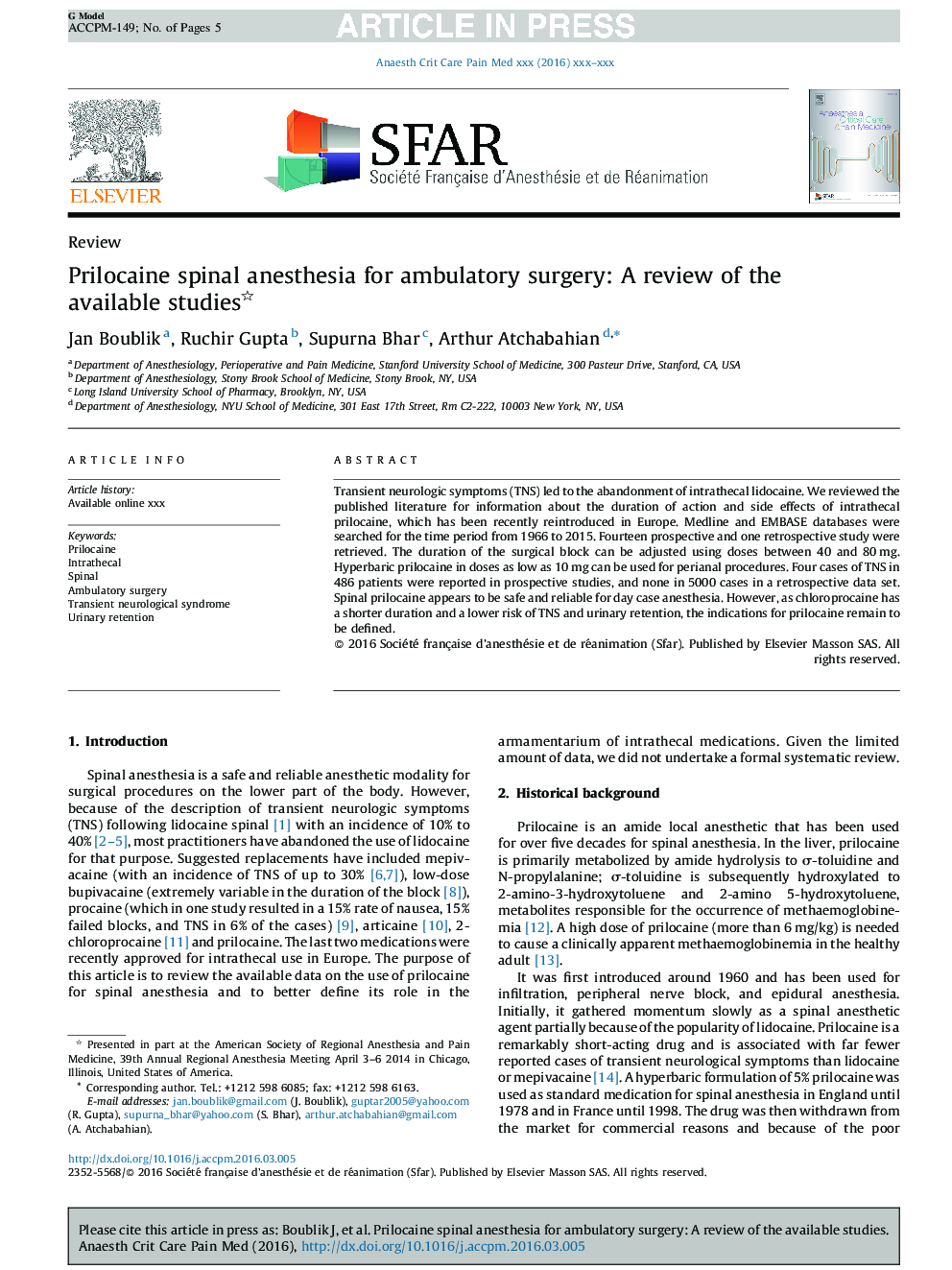| Article ID | Journal | Published Year | Pages | File Type |
|---|---|---|---|---|
| 8609683 | Anaesthesia Critical Care & Pain Medicine | 2016 | 5 Pages |
Abstract
Transient neurologic symptoms (TNS) led to the abandonment of intrathecal lidocaine. We reviewed the published literature for information about the duration of action and side effects of intrathecal prilocaine, which has been recently reintroduced in Europe. Medline and EMBASE databases were searched for the time period from 1966 to 2015. Fourteen prospective and one retrospective study were retrieved. The duration of the surgical block can be adjusted using doses between 40 and 80Â mg. Hyperbaric prilocaine in doses as low as 10Â mg can be used for perianal procedures. Four cases of TNS in 486 patients were reported in prospective studies, and none in 5000 cases in a retrospective data set. Spinal prilocaine appears to be safe and reliable for day case anesthesia. However, as chloroprocaine has a shorter duration and a lower risk of TNS and urinary retention, the indications for prilocaine remain to be defined.
Related Topics
Health Sciences
Medicine and Dentistry
Anesthesiology and Pain Medicine
Authors
Jan Boublik, Ruchir Gupta, Supurna Bhar, Arthur Atchabahian,
